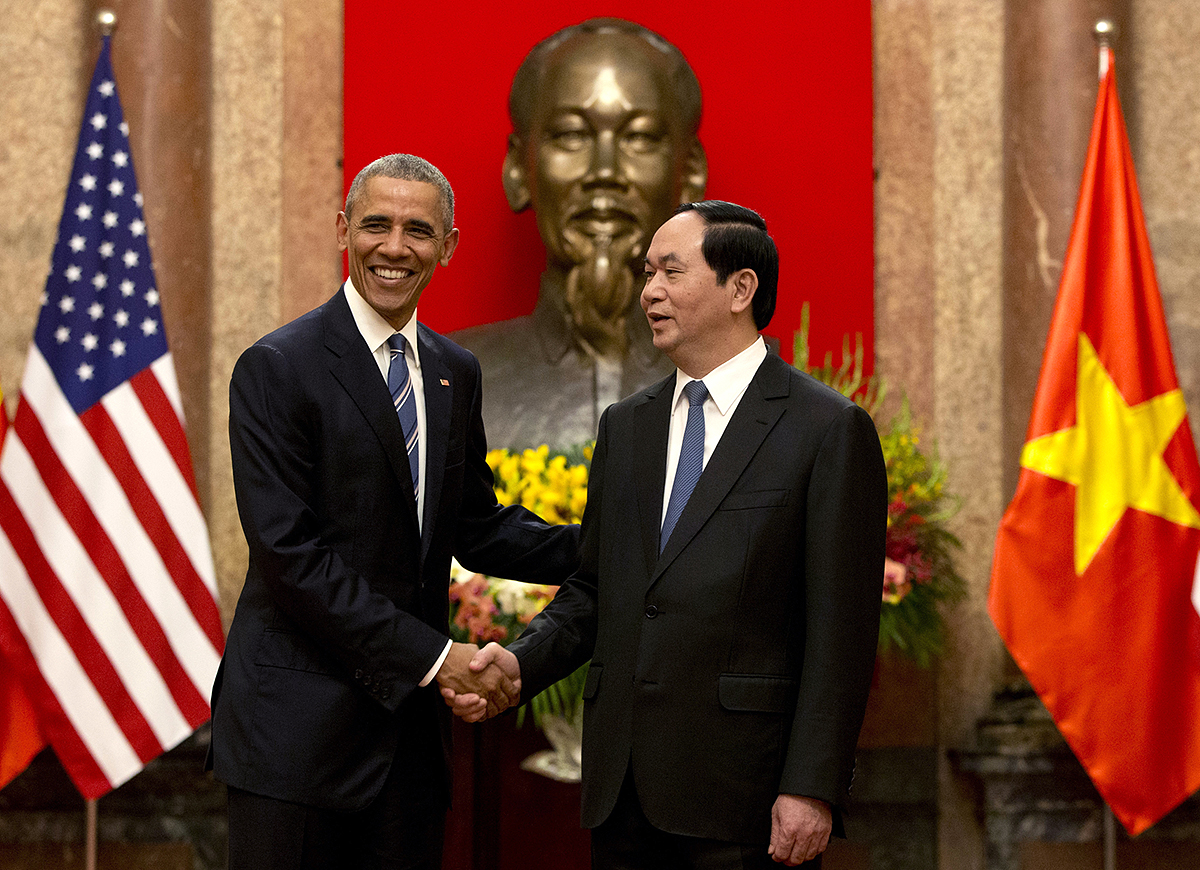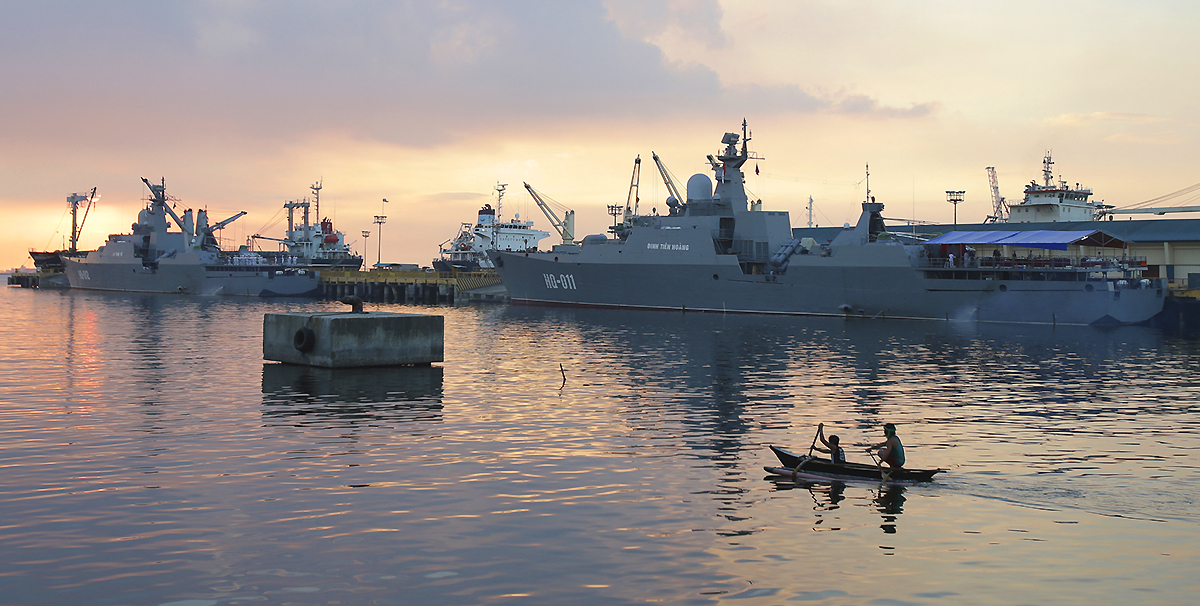In a move that will only escalate tensions in and around the already very tense South China Sea, the Obama Administration has lifted a 50 year long ban on exporting weapons and military equipment to Vietnam. The once bitter foes have enjoyed ever tightening ties over the last decade, as common strategic and trade interests have superseded a war-torn history.

The announcement was made during a news conference hosted by both President Obama and Vietnamese President Tran Dai Quang. Almost laughably, Obama noted that the move was not in response to China’s growing military might and their wholesale claims on the South China Sea. A strategy China has backed militarily with an island building campaign that is tipping the balance of power in the region.

Vietnam’s weapons shopping list is extensive, and opening a whole new market for American arms sales is a rare shot in the arm for US defense contractors. Missiles, radars, maritime patrol aircraft, aerial transports and a series of naval assets are at the top of this list which could even include advanced fighter aircraft in the not so distant future.
Historically, Vietnam’s primary source for advanced weaponry has been Russia, and although the majority of Vietnam’s arsenal is made up of Cold War-era legacy equipment, Hanoi is accelerating its military modernization. Vietnam’s air arm has acquired the Su-30MK2 advanced Flanker derivative in recent years, and their navy has procured improved Kilo class diesel-electric submarines and modern Gepard class frigates, all of which are of Russian origin.
Additionally, modern Russian anti-ship missiles outfit Vietnam’s surface warships and submarines, with 3M-54 Klub missiles being carried by their Kilo class submarines. The Gepard class frigates are equipped with Kh-35 Uran-E anti-ships missiles produced locally under license, and they can also launch a land-attack variant of the missile. Vietnam has also ordered Russia’s advanced Bastion-P coastal defense systems, which fire the supersonic P-800 Oniks anti-ship missile. These fairly advanced anti-ship weapons clearly underline Vietnam’s increasing focus on protecting its territorial claims in the South China Sea.

China is familiar with nearly all these Russian weapons and has also received similar imports. Moving toward procuring US systems could give Vietnam a tactical edge over its overwhelmingly powerful regional competitor. It could also bring Vietnam even closer to America’s foreign policy orbit, opening up a whole new level of military cooperation between the two militaries.
It is also likely that Vietnam will soon turn toward the US for higher-end maritime patrol capabilities. This could come in the form of an export version of the hugely successful P-8 Poseidon, refurbished P-3 Orions, or even surplus and revamped S-3 Vikings, which would be uniquely suited for Vietnam’s regional interests.
The Obama Administration has pursued commonality among key allies when it comes to weapons systems (P-8, F-35 etc) as a foreign policy tool in itself. Considering Australia and India will both be flying the P-8 alongside the US in the region, Vietnam may get the opportunity to join this elite club.
Beyond the coastal patrol craft that President Obama mentioned in his statement, US warship designs, such as the Littoral Combat Ship and National Security Cutter (or one of its enticing military derivatives) could end up in Vietnam’s naval arsenal in the coming years.
Naval confrontations between China and Vietnam have hit a crescendo, and just last week China instituted a ban on fishing in the South China Sea, stating that they would stop any vessel that it sees doing so. This comes as ship-to-ship ramming and vessel seizures have become the norm in the contested but highly strategic and resource-rich waterway.

The truth is that beyond China’s dizzying man-made island outpost building campaign, the country has been spending huge sums of money on vessels and weaponry that are acutely aimed at enforcing their claims on nearly the entirety of the South China Sea. Case in point their massive new “coast guard” cutters, sea-basing ships, and their importing and now indigenous construction of the monstrous Zubr class hovercraft.
With all this in mind, Vietnam really doesn’t have much of a choice but to increase ties and military cooperation with the US, as they stand no chance of unilaterally defending their claims militarily against China, should it ever come to that. As for China, they seem nonplussed with this revelation, with Chinese Foreign Ministry spokeswoman Hua Chunying stating:
“As a neighboring country, we would be happy to see Vietnam develop normal and friendly cooperative relationships with all other countries, including the United States… And we hope those normal and friendly relationships are conducive to regional stability and development.”
This sounds well and good, but surely any major development that will challenge China’s overt military dominance in the region is not a welcome in Beijing’s eyes. Especially one in which the US was a major partner.

Now we will have to wait for some type of military reaction from China. In the last two weeks they have executed a dangerous intercept on an America spy plane operating along the Chinese border in the northern portion of the South China Sea, and launched fighters on a US destroyer that was performing a freedom of navigation drill within the supposed territorial waters of their man-made island outposts. With this most recent news, it is likely China will signal an increased military presence in the region. This could come in the form of more patrols off Vietnam’s coast, the announcement of war games in the area, or the further weaponization of their man-made islands.
Contact the author Tyler@thedrive.com
